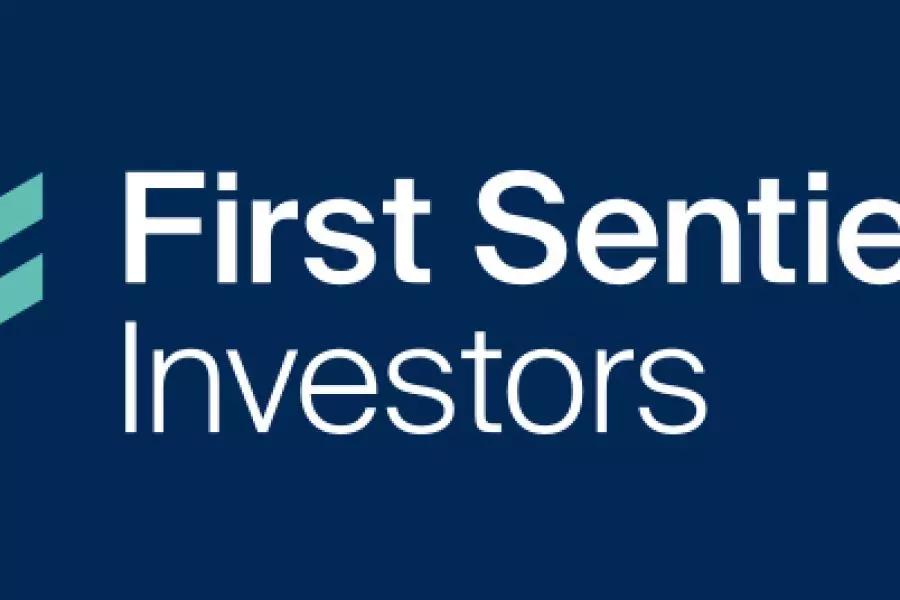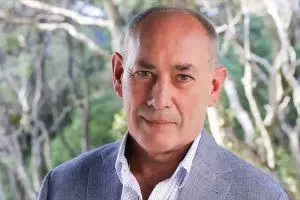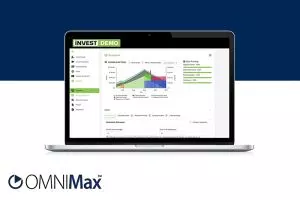Special Report
Reflation, renewables and the road ahead: three predictions for global listed infrastructure

Friday 15th of October 2021
1. The valuation gap is closing
The past 18 months have been particularly challenging for global listed infrastructure, as 2020 was only the second time in the past 15 years that the asset class underperformed both global equities and bonds over a calendar year. We believe that a lot of risks, such as rising interest...
Want to read the full article?
Click the button below to subscribe and will have unlimited access to full article and all other articles on the site.
Latest News
3 min read
2 min read
3 min read
Latest Comments
nib drops bombshell changes to policies
I question why there was a need to introduce co-pays alongside premium increases at this stage. The full effect of the premium increases is yet to flow through the portfolio, as these only take effect at renewal time. The increases to date already look to be working – 2025FY revenue was up 8.1% on 2024FY despite a 2% decrease in policyholder numbers. Claims inflation looks to be easing.
Here are some figures from nib’s financial statements and investor presentations. (Working-day adjustments are my own calculations.)
Rolling 3-month premium increases: 1Q25 = 11%, 2Q25 = 13%, 3Q25 = 15%, 4Q25 = 17%, and 1Q26 projected at 22%.
Rolling 3-mth claims inflation: 1Q25 = 16%, 2Q25 = 17%, 3Q25 = 22%, 4Q25 = 20%.
Rolling 12-mth claims inflation (adjusted for working-days effect): 1H25 = 18.8%, 2H25 = 17.4%
Claims inflation from 1H25 – 2h25 (adjusted for working-days effect): 5.6%
Premium revenue: 1H24 = $182.4M, 2H24 = $188.8, 1H25 = $195.7M, 2H25 = $205.7M (in AUD)
Claims expense (net of reinsurance costs and recoveries, not adjusted for working days): 1H24 = $119M, 2H24 = $122.1M, 1H25 = $144.7M, 2H25 = $142.2M (in AUD)
Underlying Operating Profit (Loss): 1H24 = $11.3M, 2H24 = $7.8, 1H25 = ($10M), 2H25 = $7.1 (in AUD)
Summing up: In the last 2 years, only 1H25 was in the red. nib is already on the path back to profitability, and experience has shown them that the NZ policyholders can tolerate some pricing pain. (Ed Close, nib CEO and MD: “We are seeing strong resilience from that portfolio around the ability to absorb those significant premium increases.”) Why introduce more pain in the form of co-pays, and why now?
PS: Why hasn’t nib nz announced the FY25 result yet? For the last couple of years, the NZ half- and full-year results are announced within a day or 2 of the nib Group reports. FY25 for the Group was available on 25th August, yet nothing but crickets and co-pays on this side of the ditch.
1 week ago Paul Flood
Medical insurance with guaranteed policy wording: the only suitable option?
@Sigh Master, you raise some good points, and Steve and I had a discussion around some of these this morning.
There's a line in here somewhere, where good conduct and good faith get questioned. At this stage, I doubt that nib has crossed that line, and this remains in the commercial decisions area the FMA won't step into.
The service level issues definitely are something that needs addressing, and I think that message is being heard, but it takes time to sort it out too.
My understanding is that on the guaranteed policies, they cannot impose an excess change any more than they can remove benefits. They could impose minimum excesses on the other non-guaranteed policies, though at $4k I suspect that would cross the line I mentioned above, with removing or reducing too much of the contract clients have.
The how of all of this is also my key contention. Like Southern Cross' changes in the past, the what is something the insurer can do; morally or ethically aside, it is the legal bit that governs this.
The how is the part that is upsetting advisers and clients, as it has not been effectively socialised and explained to date, thus the reaction from everyone.
Although there is a caveat too, a significant number of advisers don't understand what's been going on nearly as well as they think they do. The massive increase in medical utilisation over the last 3-4 years is why we have what we have with medical premiums and insurer changes. I wrote about this in May with few answers on how this could be solved. https://www.goodreturns.co.nz/article/976524204/medical-premiums-and-the-public-system.html
nib's response here, while drastic and with poorly managed delivery, is the effect of the market we are operating in. For now, the rest aren't indicating dramatic changes, but then we didn't know this was coming from nib last Friday either. Monday morning, we could be hearing from the others in a similar fashion.
What I do know is the continued increase in utilisation of our medical system, coupled with the public system not meeting that need, is going to continue to put pressure on medical insurers, as we have seen. This is going to put pressure on the entire market, driving more of what we have seen this week. Insurers, like every other business, have to balance the books, and the only two levers are either a premium increase or a reduction of benefits.
Which is why the message to all advisers is to use a guaranteed wording product. You can't solve the problem for most existing clients, but you can prevent new clients from being exposed to the removal of choice when insurers move to make drastic changes. That choice then enables the client to choose between two crappy options: pay a higher premium or lose/reduce benefits. Without guaranteed wording, it's both with no choice. That is not what risk management is about!
1 week ago Jon-Paul Hale
Medical insurance with guaranteed policy wording: the only suitable option?
@Sigh Master – we already know where nib stands on the issue of commission. Here is what they said in their 2019 submission on the COFI options paper:
“A key conflict of interest in the insurance industry is that arising for ‘commissioned advisers’. The opportunity to address this issue under the Financial Services Legislation Amendment Act and Code of Professional Conduct for Financial Advice Services has been missed. Unless this inherent conflict is clearly addressed and managed the implementation of conduct duties on the industry will struggle to be fully effective.”
“We also support option 4: Impose parameters around the structure of commissions (i.e. commissions paid to intermediaries). Well-structured commissions can play a useful role in ensuring appropriate advice is provided and leads to good customer outcomes. In addition, setting parameters around the level of commissions would create a useful framework for the industry to design commission structures that provide good customer outcomes.
We support the introduction of an express limit on the percentage of upfront commissions as well as the ongoing existence of an appropriate level of trail commission for advisers who do provide an ongoing service to their clients.”
1 week ago Paul Flood
Medical insurance with guaranteed policy wording: the only suitable option?
The main points of COFI (Conduct of Financial Institutions Act 2022, NZ):
Purpose
To ensure financial institutions (banks, insurers, non-bank deposit takers, etc.) treat customers fairly.
Do the recent changes, excessive premium increases and excessive delays in processing met this definition?
Also not all clients are being treated fairly as not all are allowed to migrate to Ultimate Health age, claims just 2 of the reasons the rest we have absolutely no idea why they won't allow - so good to say everyone should be in a guaranteed wording policy just how do we make this change when the options are not there either due to a NO from nib or health issues stopping clients from going elsewhere.
BTW it is my understanding there is no guarantee around the excess so they could decide to only allow large excesses such as 4k - don't think they can't given what they have just done.
Secondly,
I believe that there is a requirement to also treat advisers fairly - to simply send out this information in email form with no thorough explanation given they only just had roadshows the opportunity was there. No full explanation of why this action has been taken and why they have seriously deflated the value of a policy that the client has chosen to take out.
So where is FMA or do we have to approach them with our concerns at how we and our clients are being treated.
Commission will be the next target surprised it wasn't the first to be honest.
1 week ago Theresa Hatton
Medical insurance with guaranteed policy wording: the only suitable option?
Thanks for the additional insights Lifer. The challenge of benefit removal remains with the lack of choice and implications for those who are relying on cover that is removed.
Price is a well-understood issue with policy guarantees; at the same time, the AIA MajorCare book, which is also guaranteed, while having its challenges, isn't wildly out of step with current premiums. So it can be managed, and this book included group before it was closed.
The contract distinction is one that insurers can hide behind, as I have said elsewhere. If they genuinely wanted to, as they have been saying, they wouldn't change things like this; they could implement the guarantees like Partners Like and nib have with UHM.
I've been told by my Accuro people that they wouldn't pull things from the cover, and I always replied, "Put it in writing", while they have just applied a $200k lifetime cap to back surgery. Not quite as bad as what's happening with nib, but another example of if the will is there, they can do it.
2 weeks ago Jon-Paul Hale







